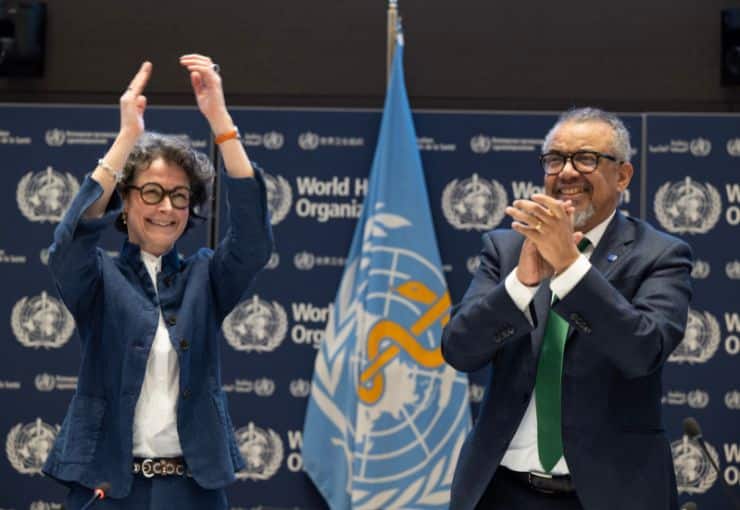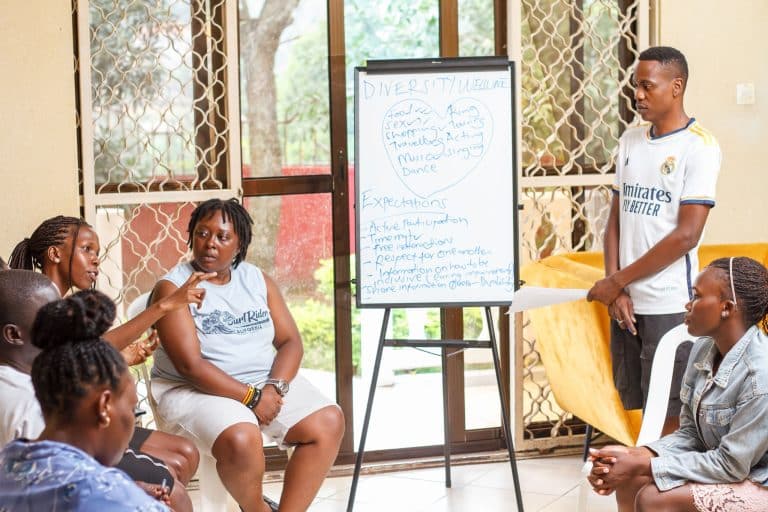Elisa Veini
Last week, Wemos’ global health advocate Linda Mans shared her knowledge of the migration and mobility of health workers with global health students during two workshops at the University of Groningen. This was her impression of the day.
The symposium focused on global health, and on ‘crossing borders and boundaries in medicine’ specifically. So obviously, there was no doubt that you would participate, right?
Yes, Wemos has a long track record in global health workforce advocacy. During the project Health Workers For All, we looked into how the migration and mobility of health workers shifted their distribution in eight different countries in the European Union. Our current project within the Health Systems Advocacy Partnership focuses on the responsibility of the Netherlands as well as the EU to not become dependent on foreign health workers (and to collectively invest in health workers to achieve strong primary health care in East African countries). We believe that high-income countries, like the Netherlands, should join forces with low-income countries to globally strengthen the health workforce.
Who comes to mind in particular? National governments?
Not just governments. It is a global problem, and therefore it is only evident that international agreements are much needed. The World Health Organization (WHO) has a convening and normative role in this matter, but member states eventually decide. The WHO Code that focuses on tackling the unwanted effects of health worker mobility is a key document that all member states have agreed upon and, therefore, should implement. It is up to civil society organizations like Wemos to remind the WHO and member states of the urgency of this issue. And unions, for instance, are also important allies.
How would you describe the students’ reactions?
They were surprised to hear how much effort civil society organizations put into ensuring that international agreements are adhered to. This is basically hardcore advocacy on soft law issues. The WHO Code stimulates countries to tackle their own (impending) health workforce shortages in a sustainable and ethical way. The Code also states that you cannot prohibit people from working abroad; it is everybody’s right to be able to migrate elsewhere. So it is actually about making agreements based on equal treatment, as the problem of foreign health workers being treated worse or being paid less than local health workers is so common.
The young physicians probably understood the urgency of the matter.
Most definitely. Many expressed their desire to see more of the world, to work abroad. I believe that the new generation of doctors will be more mobile than previous ones. They truly want to contribute to the health workforce, to contribute to helping people wherever there is a need for. This is why they were at the workshop, at the Global Health symposium, and why they chose to pursue a master’s in global health.
In other words: they want to be a part of the solution to the health workforce shortage in low-income countries.
That is one way to put it. They were also truly shocked by the active recruitment of health workers from countries like those in Africa, where there are already too few physicians and nurses. For example, Malawi has just 36 physicians, nurses and midwives per 100.000 citizens. Compare this to the ratio in Belgium – approximately 1300 – which exceeds Malawi by a factor of 36. One of the students said: ‘If there already is a shortage, then recruiting health workers from that country is just plain unacceptable.’ Indeed, it is just plain unacceptable – and yet, it still happens.
What was your take-home message at the end of the day?
The students made one thing clear: mobility will not decrease in the near future. Let’s reap the benefits of their enthusiasm and determination to find ways to solve a part of the unequal distribution of the global health workforce.




